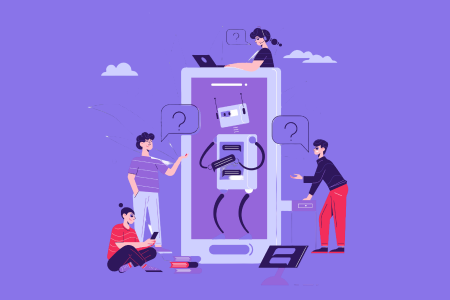In the contemporary digital landscape, the rapid evolution of artificial intelligence technology has revolutionized our lifestyle and professional landscape. These advancements have introduced unprecedented conveniences, but they have also ushered in a fresh array of challenges, particularly in the realm of cybersecurity.
As cyber threats grow in complexity and scale, organizations are increasingly turning to artificial intelligence (AI) to fortify their defense mechanisms. This article delves into the profound ways in which AI is fundamentally reshaping the cybersecurity landscape and the pivotal roles it plays in enhancing our digital security.
Revolutionizing Threat Detection and Prevention
One of the most significant impacts of AI on cybersecurity is its pivotal role in revolutionizing threat detection and prevention. AI-driven systems possess the capability to swiftly analyze expansive datasets in real-time, enabling the identification of anomalies and potential threats that might otherwise evade notice.
By leveraging machine learning algorithms, these systems can assimilate insights from historical data, recognizing intricate patterns of suspicious behavior. This, in turn, empowers organizations to proactively shield themselves against emerging cyber assaults.
Predictive Analysis Redefined
AI’s predictive capabilities have transformed the cybersecurity landscape. Through predictive analysis, AI algorithms have the capacity to anticipate potential threats and vulnerabilities based on historical data and prevailing trends.
This proactive approach equips organizations to swiftly address vulnerabilities, bolster defensive measures, and maintain a preemptive stance against cybercriminal activities.
Swift and Precise Automated Incident Response
The prowess of AI-driven cybersecurity systems shines in their capacity to respond promptly to security incidents. Automation plays a pivotal role in rapidly containing threats and curtailing potential damages.
By seamlessly isolating compromised systems, disengaging malicious users, and even recommending remedial actions, AI drastically reduces response times from hours to mere milliseconds.
Confronting Phishing and Fraud through Artificial Intelligence
Persistent threats like phishing attacks encounter a robust defense through AI’s intervention. AI algorithms delve into email content, user behavior, and network traffic to detect the subtle nuances of phishing attempts and fraudulent activities.
By flagging suspicious emails and behaviors, AI stands as a formidable guardian, shielding individuals and organizations from falling victim to deceptive schemes.
Elevating User and Entity Behavior Analytics (UEBA) with AI
AI takes center stage in the crucial realm of User and Entity Behavior Analytics (UEBA). Through AI-driven systems, continuous monitoring of user and entity behavior establishes a baseline of normal activities.
Any deviations from this baseline trigger immediate alerts, empowering organizations to promptly identify insider threats and unauthorized access attempts.
Strengthening Authentication with Artificial Intelligence
AI is orchestrating a transformation in authentication processes, rendering them more robust and secure. AI-driven authentication strategies employ methods ranging from biometric recognition to behavioral analysis.
These strategies offer multi-layered security that is exceptionally challenging to deceive. These advancements ensure that only authorized individuals gain access to sensitive systems and data.
In-depth Security Analytics Empowered by Artificial Intelligence
AI-powered security analytics platforms excel in processing colossal amounts of data to yield comprehensive insights into an organization’s security stance.
This empowers cybersecurity professionals to make well-informed decisions, allocate resources optimally, and implement security measures where they are most needed.
Agile Adaptation to Evolving Threats
In a landscape where cyber threats perpetually evolve, growing more intricate and evasive, AI’s real-time adaptability is invaluable. It emerges as a crucial asset in countering these evolving threats.
AI systems continuously update their algorithms and strategies based on emerging threats, ensuring the continuity of effective defenses.
A Profound Transformation and its Implications
The profound impact of artificial intelligence on cybersecurity resonates deeply. By bolstering threat detection, prediction, and response, as well as enhancing authentication and analytics, AI reshapes how we safeguard our digital domain.
As cyber threats continue to morph, organizations embracing AI-driven cybersecurity solutions position themselves to protect their assets, data, and reputation in an interconnected and increasingly vulnerable digital realm. AI transcends being a mere tool. It emerges as an influential ally in the unceasing endeavor to secure the digital frontiers.
Conclusion
The impact of artificial intelligence on cybersecurity is profound and far-reaching. By bolstering threat detection, prediction, and response, as well as enhancing authentication and analytics, AI is transforming the way we safeguard our digital world.
As cyber threats continue to evolve, organizations that embrace AI-driven cybersecurity solutions will be better equipped to protect their assets, data, and reputation in an increasingly connected and vulnerable digital environment.
AI is not just a tool; it is a powerful ally in the ongoing battle to secure the digital realm.



